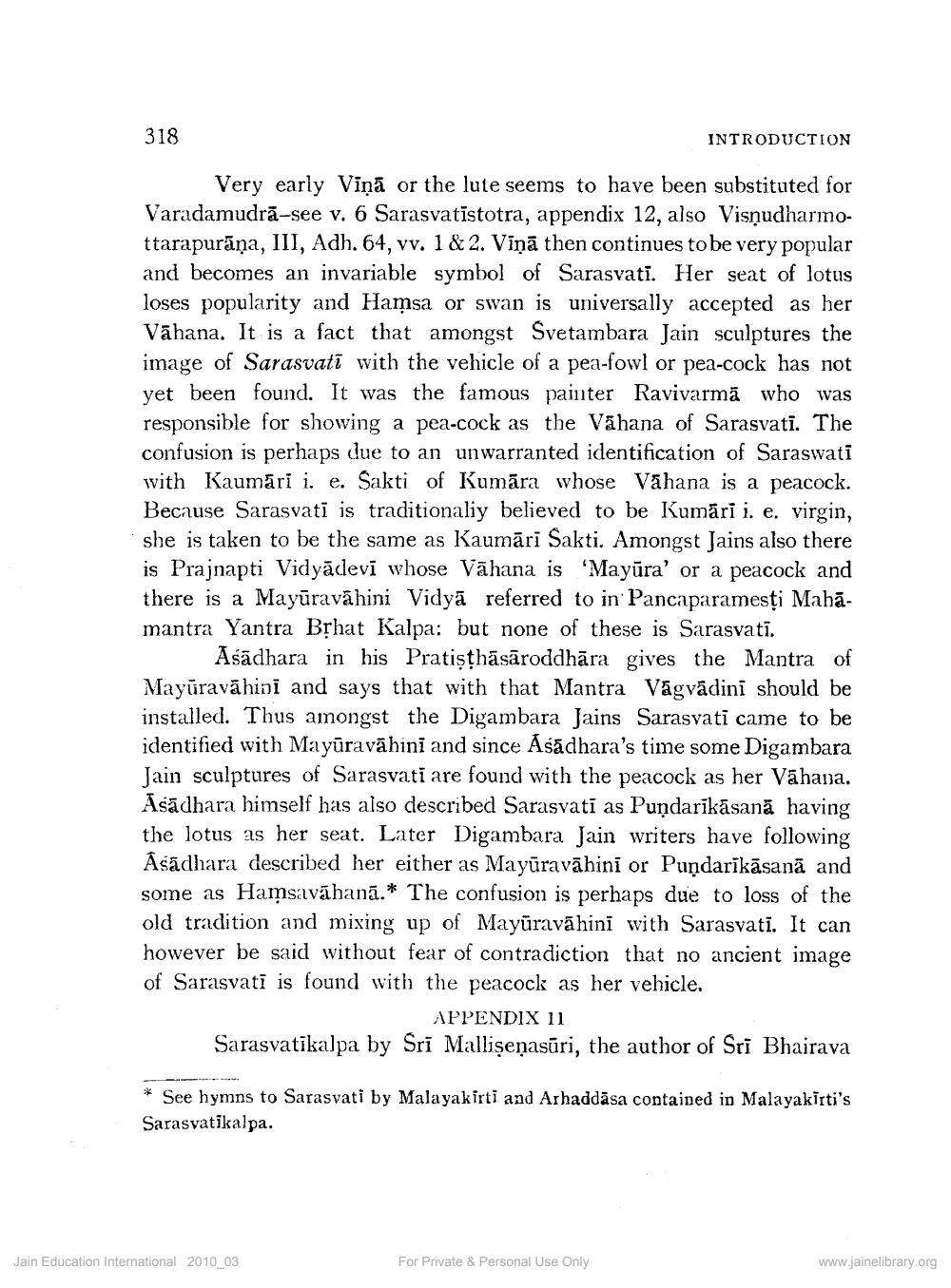________________
318
INTRODUCTION
Very early Vīņā or the lute seems to have been substituted for Varadamudrā-see v. 6 Sarasvatīstotra, appendix 12, also Visņudharmottarapurāna, III, Adh. 64, vv. 1&2. Vīņā then continues to be very popular and becomes an invariable symbol of Sarasvati. Her seat of lotus loses popularity and Hamsa or swan is universally accepted as her Vāhana. It is a fact that amongst Svetambara Jain sculptures the image of Sarasvati with the vehicle of a pea-fowl or pea-cock has not yet been found. It was the famous painter Ravivarmā who was responsible for showing a pea-cock as the Váhana of Sarasvati. The confusion is perhaps due to an unwarranted identification of Saraswati with Kaumāri i. e. Sakti of Kumāra whose Váhana is a peacock. Because Sarasvati is traditionaliy believed to be Kumāri i. e. virgin, she is taken to be the same as Kaumārī Sakti. Amongst Jains also there is Prajnapti Vidyādevi whose Vāhana is 'Mayūra' or a peacock and there is a Mayūravāhini Vidyā referred to in Pancaparamesti Mahā. mantra Yantra Bșhat Kalpa: but none of these is Sarasvatī.
Asādhara in his Pratisthāsāroddhāra gives the Mantra of Mayūravāhini and says that with that Mantra Vägvädini should be installed. Thus ainongst the Digambara Jains Sarasvati came to be identified with Mayūra vāhini and since Asadhara's time some Digambara Jain sculptures of Sarasvati are found with the peacock as her Vāhana. Asādhara himself has also described Sarasvati as Pundarīkāsanā having the lotus as her seat. Later Digambara Jain writers have following Asādhara described her either as Mayūra vāhini or Pundarikāsanā and some as Hamsavāhanā.* The confusion is perhaps due to loss of the old tradition and mixing up of Mayūravāhini with Sarasvati. It can however be said without fear of contradiction that no ancient image of Sarasvati is found with the peacock as her vehicle.
APPENDIX 11 Sarasvatikalpa by Sri Mallişeņasūri, the author of Sri Bhairava
* See hymns to Sarasvati by Malayakirti and Arhaddāsa contained in Malayakirti's Sarasvatīkalpa.
Jain Education International 2010_03
For Private & Personal Use Only
www.jainelibrary.org




